Take a good look at the map below. The Islands you see to the left of the ‘Andaman Sea’ are the Andaman & Nicobar Islands. You do not need a scale or any other geometrical instrument to prove that these islands are closer to Myanmar, Thailand, Malaysia and Indonesia than Bharat. In fact that the Southern tip, known as the Indira Point is less than 100 nautical miles from Sumatra. And yet, they are an integral part of India, and there has never been any dispute on the affiliation of these 572 islands. And the reason for that is simple. Nearly all the people who live on these blessed isles have migrated from India within the last 250 years. What is more interesting to note, is that they come from every nook and corner of our country. In fact Port Blair, which is the capital, can very well be called “mini-India”. This little article is based on our visit to the Andamans in January this year. I will recount it in the same sequence as our visit, in which I and my wife were accompanied by my brother Surinder and his wife, Satinder.
Port Blair
The local residents save a certain amount of time every day by calling it ‘Po-blair’. The first thing you need to learn about the place is its very brief history. There is a lack of clarity on who lived and ruled these tiny islands before the eighteenth century. But there is enough evidence to suggest that the tribes who inhabited the islands did not permit people from the main land to disturb their peace. Mosquitoes and reptiles helped them in the process of retaining their hold on the territory. Tropical diseases and deep black waters acted as their defences. However, the East India Company had a sufficiently strong marine force to establish a settlement in Port Blair. When the Sepoy mutiny occurred in 1857, they felt the need for a penal colony. The Andamans provided an excellent haven for this purpose, and when the Independence movement became strong, they needed a prison which could act as a potent and awesome deterrent. Consequently, the dreaded ‘Cellular’ jail was constructed between 1896 and 1906 for the most virulent prisoners. In this jail, the prisoners were lodged in small cells for solitary confinement. They were required to do menial work and if they failed to deliver the required output, they were lashed. The stories of their torture are depicted in a ‘light and sound’ show every evening and I saw several moist eyes at the end of the show. Some were also filled with palpable anger against those who perpetuated those heinous violations of human rights. The water around these islands is more black than blue, and hence the name, ‘Kalapani’. We begin with a few pictures of the jail, before proceeding further.
The jail has been converted into a national heritage site, and all visits begin from the portals of this formidable building.
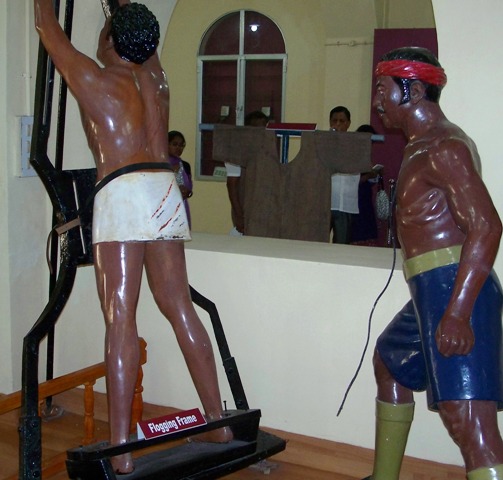 This is a life-sized sculpture depicting the punishment meted out to those prisoners who violated any law of the prison. It fills one with awe and reverence for those who bore such torture for our freedom from the colonial rule.
This is a life-sized sculpture depicting the punishment meted out to those prisoners who violated any law of the prison. It fills one with awe and reverence for those who bore such torture for our freedom from the colonial rule.
In a museum which has been established inside the Jail, you find pictures of those who were imprisoned in ‘Kalapani’. You find photographs of persons from every state and they belong to all castes, creeds, communities and religions of India.
 There is evidence to suggest that some prisoners came from rich families and even the elderly freedom fighters were not spared.
There is evidence to suggest that some prisoners came from rich families and even the elderly freedom fighters were not spared.
The Japanese Invasion
The Japanese added another chapter to the story when they invaded Singapore in 1942. They captured Andamans and our British rulers became their prisoners, just like us. As captors, they proved to be far more cruel than the British. Nearly all the records were destroyed by them and the ‘cantonment’ in the Ross Island, from where the British officers controlled Port Blair was reduced to rubble. Consequently, we do not have exact figures of how many prisoners were incarcerated, tortured and executed in the Andamans. The four years rule of the Japanese altered the landscape completely. Ross island is nearest to ‘Poblair’ and it now lies in ruins. It appears that there were some lovely bungalows on this picturesque island, and the remnants of a magnificent church tells the story of the glory of the British Raj.
The ruins of the Church have their own tale to tell. From its size, one can estimate the congregations during that period
What remains of the cemetery next to the Church bears testimony to the Empire, which is now, ‘Gone With the Wind’ !
Surrender of the Japanese
When the Japanese were defeated, the British regained control over the Andamans, but by that time, the Indian independence act had been passed. For a while, the Indian and the Burmese governments toyed with the idea of re-settling Anglo-Indians in the Andamans. The prisoners had been set free and allowed to go home. However, back home, they found that their lands had been taken over by others, who had given them up as dead. On the other hand, they had got used to living in the Islands and preferred to go back there, with their families. Consequently, those who had de-forested those islands and constructed all the buildings got the right to live in them and savour the fruits of their labour.
Forest and Marine Wealth
Only 36 out of the 574 islands are permanently inhabited. But what they contain is a rich repository of forest and marine wealth. Quite apart from the sea food, there is an enormous reservoir of corals and sea shells. Since the islands have not been polluted with industrial wastes, they are also have a great tourist attraction, and, therefore they provide livelihood to thousands of persons engaged in the hospitality industry. Given below are a few pictures:
The shades of green colour are a feast for the eyes. The forests are dense and are a source of a variety of useful products.
Coconuts and betel nuts grows there in plenty. This picture is from a place called “Nariyal Baghicha” ( a garden of coconuts)
This picture is from Mount Herriot, which is very close from Port Blair. This was once a well developed cantonment but is now uninhabited and maintained as a reserve forest. It has a lighthouse, whose picture is printed on our Rs 20 note.
 This signpost tells the story very well, and signifies the importance of the forests quite appropriately. It should be included in the syllabus of our school children, so that they know the importance of conservation of trees and plants
This signpost tells the story very well, and signifies the importance of the forests quite appropriately. It should be included in the syllabus of our school children, so that they know the importance of conservation of trees and plants
This is just one sample of what the ocean bed has. Stealing of sea shells is strictly forbidden, because it is an important source of livelihood of the residents of Islands. However there is a museum in which you can see the entire range of corals.
This is a familiar sight in temples. The ‘conch shells’ (called shankh in Hindi) are used for “Shankhnaad“…the bugle for the devotees. They are also nice to look at.
A Tryst with the Nature
For the nature lovers there can be no better place. Honeymooners and elderly people throng to these far removed islands for a get away. The beaches are as good as any in the world. The local inhabitants make sure that they are pristine clean, and plastics are strictly forbidden. Even water has to be carried in thermos flasks, so that there is no litter on the beaches. Here are a few pictures of the beaches.
This is on the famous Havelock island. One of the beaches there has these green colored moss deposits, which are a feast for eyes.
Compare this scene with the beaches on the mainland in India…say. Mumbai or Chennai. Why can’t we emulate this???
Can you spot a honeymooning couple? I deliberately did not use the zoom. They came and met us…and I thought they have a right to privacy. They looked such a charming pair of newly weds from Delhi, who were all set to migrate to the USA. True to their promise, they are in touch with us. From the pictures we got they are just as happy in the US as they were in Andamans!
This is a picture of a giant tree uprooted by the Tsunami of 2004. The Sun peeping out of the roots was a treat to see.
 At one of the tourist spots, I saw this board erected by the Army…The message which it conveys should be learnt by all of us.
At one of the tourist spots, I saw this board erected by the Army…The message which it conveys should be learnt by all of us.
Voyage to the other Islands
To travel to other islands, one takes a boat or ship. The size of craft is directly proportional to the distance which you nedd to traverse. The longer the distance, the larger the ship. Here are a few pictures of the voyages which we undertook:
This ferry carried us, along with our vehicle to Mount Herriot. It is a short distance from Port Blair.
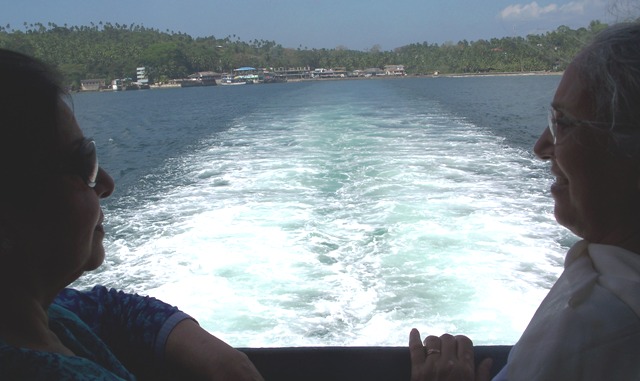 Somehow, I have a passion for the sight of the ‘wake’ which forms behind the boat. The turbulence makes a lovely sight.
Somehow, I have a passion for the sight of the ‘wake’ which forms behind the boat. The turbulence makes a lovely sight.
This ‘mini-ship’ took us to the famous Havelock Island. The journey was a little over two hours. However, since the sea was calm, the voyage was very comfortable. The name of the boat was “North Passage”
The Captain of the ship turned out to be an officer who had served in the Indian Navy, commissioned through the National Defence Academy. When he was told that I am also an ex-NDA, we were at once ‘upgraded’. He took us to his cabin and did all he could to make our journey memorable. We spent a lot of time on the upper deck with him.
In another journey, we went to an uninhabited island known as ‘Jolly Buoy’ This island is famed for its sea life. The water is unusually clear, and therefore ‘snorkeling’ is possible. Unfortunately, you require a different types of camera for underwater photography. However, I may mention that it is an experience which can not be described in words.
Indigenous Tribes
This piece will not be complete if I do not say some thing about the aboriginal inhabitants of these islands. Unfortunately most of the tribes of these islands are now extinct. However, three of them still exist. These are ’Jarawas’ , ‘Sentinalese’ and ’Onge’. Meeting or interacting with aboriginals is now forbidden for fear of further depletion of their numbers. However, in the museum, there are pictures of the tribals and a great deal is written about them. I am giving below two pictures which depict their life style. We were told that the Sentinalese are rather hostile to visitors and do all they can to fight with them.
This is a picture of a Sentinalese hunter, fishing on a crude boat. The belt which he is wearing is made out of the bark of trees.
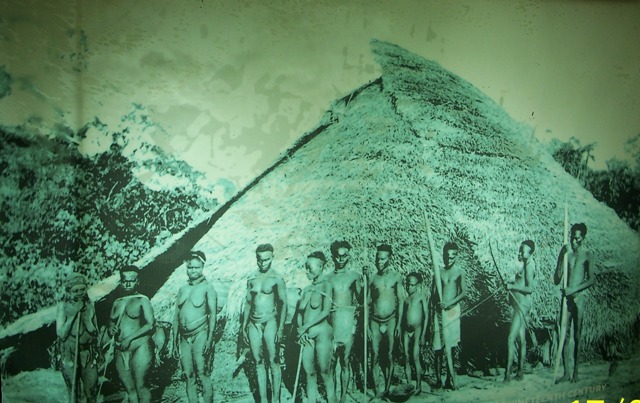 This picture shows the Jarawa tribe. Notice that they are several thousand years behind our civilization. Their lives are primitive
This picture shows the Jarawa tribe. Notice that they are several thousand years behind our civilization. Their lives are primitive
Cottages on the Havelock Island
Hotel rooms on the Havelock Island are notoriously expensive. However, a frien introduced us to one enterprising hotelier, Ashish who has built a group of eight mud houses which are very affordable. When you look at them from outside, they seem primitive, but inside they have all the modern comforts, including air conditioners. However, their thatched roofs and mud walls keep them cool and comfortable. Take a look.:
You see Ashish on the extreme left. And on the extreme right is Mr Henryk Piglowski, who went to Havelock Island for only one week, but fell in love with the place and spent 75 days. He insists that the food served by Ashish was the most delicious which he has eaten any where in the world.
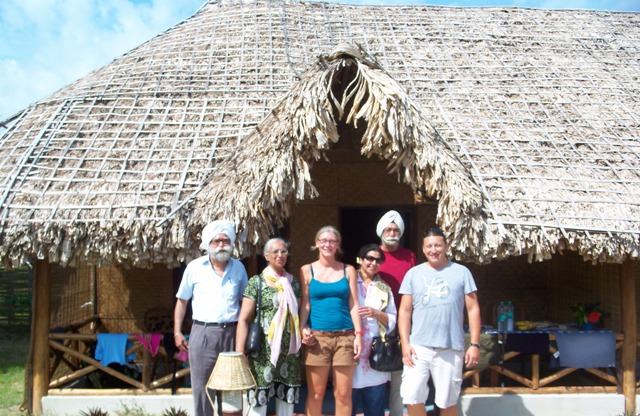 In this picture, you see the four of us with Henryk with his wife Laura Piglowska. The couple had come from the UK with their daughter, Lili. Later, the family came to Chandigarh and spent some time with us. I will write more about this compulsive traveller who seems to have been born with a ‘boarding pass’ in his hand!
In this picture, you see the four of us with Henryk with his wife Laura Piglowska. The couple had come from the UK with their daughter, Lili. Later, the family came to Chandigarh and spent some time with us. I will write more about this compulsive traveller who seems to have been born with a ‘boarding pass’ in his hand!
Our Last Day in the Andamans
On the last day, we were destined to meet Mr Harman Preet Singh (called Harry by his friends) who is a senior officer in the Coast Guard, posted in Port Blair, in the Gurdwara. He was kind enough to show us a Floating Dock on which the entire ship can be jacked up for inspection and repair. Here is a picture of the FDN.
This gigantic platform can be raised after the ship sails on to it to the desired level. The submerged portions are then accessible for inspection and repairs.
Cultural Heritage
The geographical distance from the ‘main land’ is so large that the people living in these islands have evolved a culture of their own. They lack some of the creature comforts and ‘good things’ of life, but they are spared the ills that palgue us. The air is alsmost entirely free from pollution, and the place is much more clean than the best of our towns. The local politics is free of the kind of malice in the rest of the country. The economic gap between the rich and the poor is not much : if you see a sweeper after the working hours, you will notice him to be almost as well off as the other citizens. And there being no industry, you do not have the likes of Mukesh Ambani in ‘Pobliar’.
I was also glad to learn that the people in these islands are secular to the core. Festivals of all religions are celebrated by every one, with a spirit of brotherhood, which should be taken as a lesson for us. A gurdwara built in the memory of Dr Diwan Singh Kalepani is unique. It is managed by a committee which has members from all faiths, including Christians and Muslims. Dr Diwan Singh, incidentaly, was a freedom fighter who was tortured to death by the Japanese for fighting for the human rights of the Indians.
The airport of Port Blair is named after Veer Savarkar, whose story is well known. Despite being in solitary confinement, he was able to unite the prisoners against tyrrany, and attracted the attention of the national leaders to fight with the british rulers to give a fair treatment to the prisoners. His deeds inspire awe till this day. It is due to the sacrifices made by these freedom fighters that such harmony prevails there. In Havelock Islands, I was told that no one locks the door of his house. Even petty thefts are a rare phenomenon. If I had my way, I would re-name this group of islands as ‘Harmony Islands’
This is a picture of a Gurdwara. The ‘whiteness’ of the sheets on the floor symbolized the pristine spirit of those who visit it.
The Tail Piece
I started this ‘travelogue’ with the story of a sordid jail, in which prisoners were subjected to unbearable torture and humiliation. In the ‘light and sound show’ which we saw on the very first evening, we were filled with hatred for our British rulers who perpetuated those attrocious and heinous crimes. The narrator of the story painted a picture of the Jailor and the warders as if they were the very Incarnations of the Devil. I saw tears in the eyes of the spectators with a sense of palpable anger against the White men who ruled us.
However, during the next eight days which we spent in the Andamans, I noticed that nearly all the islands are named after the British officers. Here are a few of them : Blair, Ross, Havelock, Jolly, Herriot, Viking and Vanity. The list is endless. It is apparent that the maritime prowess of the Royal Navy made it possible to reach out to the group of islands and make them habitable. And so, as I end this piece, I think I would like to conclude it on a philosophic note. We must give credit to their ingenuity and enterprise with grace and dignity.
Finally, we owe a double debt of gratitude to all those who suffered the insufferable ”Kalapani” sentence. In addition to Freedom, they have given us an undisputable right to call the Andaman & Nicobar Islands as an integral and undisputed part of India. In fact, the national spirit which obtains there needs to be be emulated by all of us who live on the ‘mainland’. Let us also learn to maintain our towns and cities like those islands, in which I could not find a single pothole on the roads. I end this article with a picture which represents peace, tranquility and equanimity.
What makes this picture different from the others is that it represents peace and tranquility.

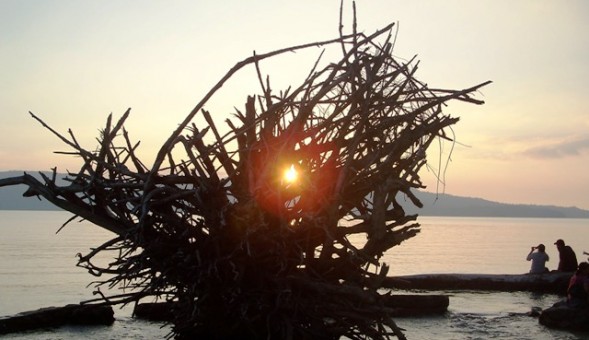

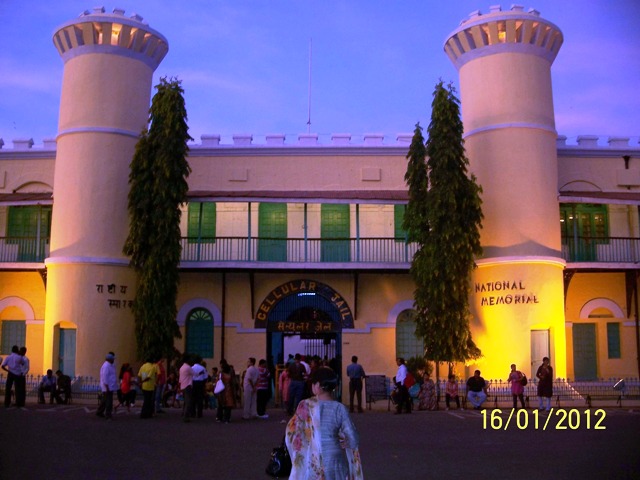


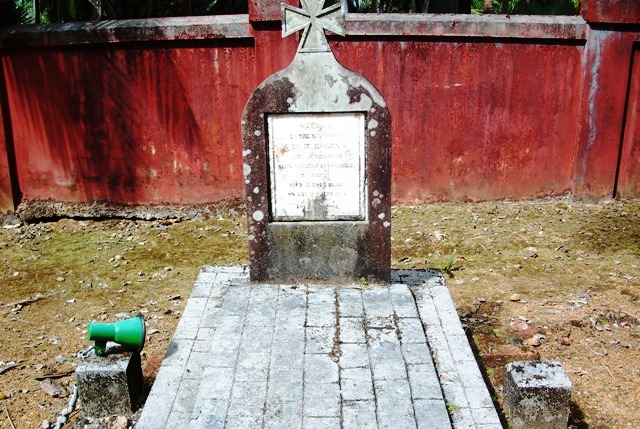
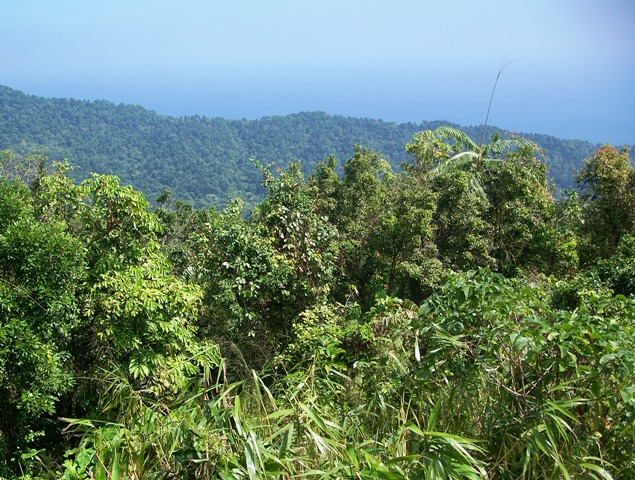
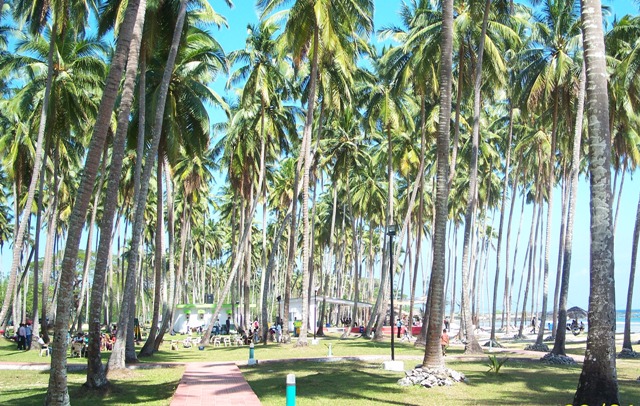

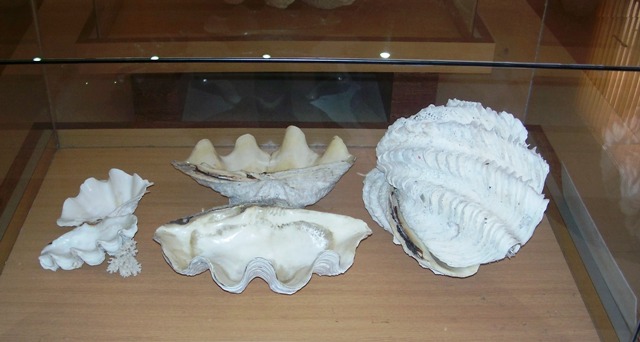




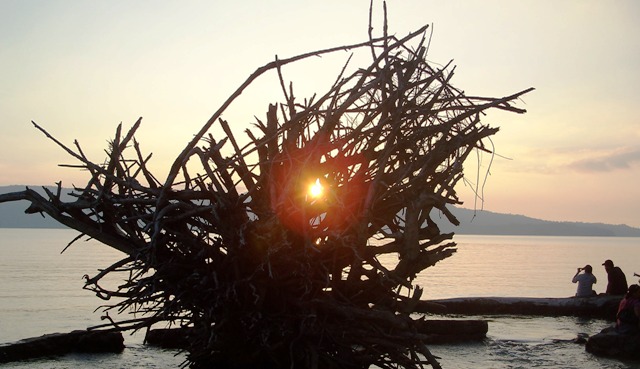
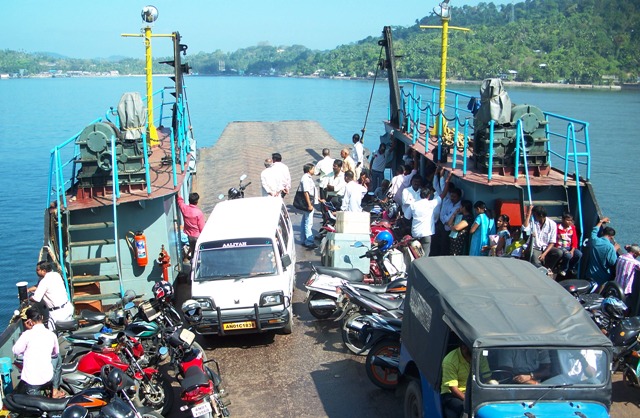

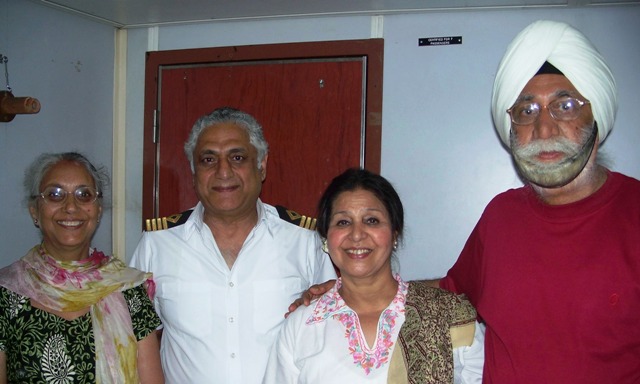
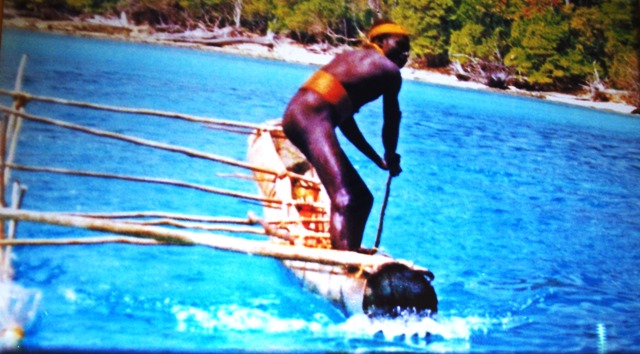

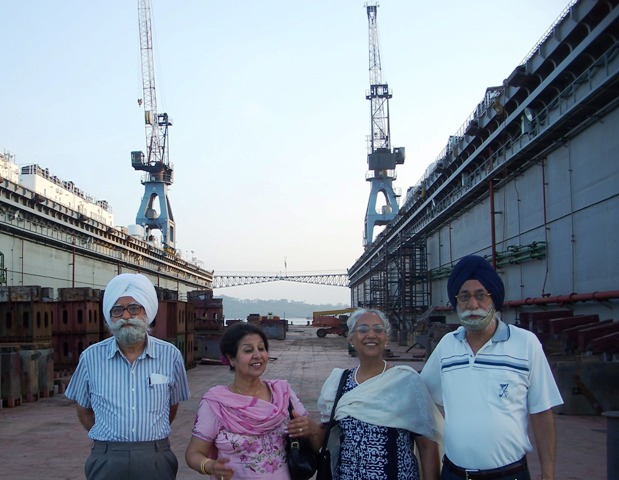








I have read your page with great interest. However I wish to highlight my observation that the page on the Andamans misses mention of Veer Savarkar, the great revolutionary whose name is eternally synonymous with the Andamans and the Kaala Pani sentence. We would greatly appreciate if you could include a piece of information on the great freedom fighter.
With Warm Regards,
Sub Lila Ram (Retd)PARA, Agra
Sir,
We have read your page with great interest. However I wish to highlight my observation that the page on the Andamans misses mention of Veer Savarkar, the great revolutionary whose name is eternally synonymous with the Andamans and the Kaala Pani sentence. We would greatly appreciate if you could include a piece of information on the great freedom fighter.
Thanks and Regards,
Nikhil Chaudhari
Dear Sir,
Thanks for forwaring interesting detials with photographs.It has inspired us to visit
this part our country.
Lt Col Avtar Chauhan
Dear Gen Surjit,
Thank you very much for the nice write up and the pictures of A&N Islands..
What is the estimated percentage of the Sikh prisoners in the Jail!!
Regards.
Harbhajan Singh
dear sir,
it was wonderful to read abt ur trip to these pristine islands some part of which you had shared during our interaction on the last day of ur visit this side. i must salute ur memory too as i don’t think u missed writing about any part of ur trip.
a very informative and interesting article, which encourages me take a short break shortly and see the places which we’ve missed till now despite having spent more than 03 years here.
with lots of respect and greetings on 66th Independence Day.
Harman
Dear General,
Just wonderful
Madam looks like Cinderella, looking around for her prince charming.
We have never been there. Hopefully we will make it soon.
thanks,
sultan
Surjit Ji,permit me to express my sincere gratitude for sharing a highly professional traveloguein respect of the territory of Andaman And Nicobar Islands. The piece brought back the memories of a HigherCommand package visit to the islands during
1984. Trip to the Carnics was as eventful as to anyother part of this off the mainland territory. Talking about the Cellular Jail, one was struck by the fact thatmajority of those who were sent there during the Independence Movement, wereturbaned Sikhs. Bengalis were second innumbers followed by the Muslims and thereafter came personnel from other Indiancastes. Best regards.
Reminded me of the days in late sixties when we took long and difficult dakota flights to the islands via Rangoon. we stayed there for about 3 days during each trip . The beaches were most amazing and had different characterstics depending on the wind direction,from wild to most serene. drank dhab water with gin and enjoyed huge variety of fish courtsey the naval detachment not forgetting the moonlit nights and sounds of the sea breeze, all for free.Those days, these were God’s own islands and perhaps still are.
Hi Surjit,
The account is so nicely told that we do not have to visit it, having seen it through eyes. If we too get a chance, I suppose I will concentrate on marine life that is supposed to be magnificent in that part. Thanks and regards. Moru
Dear Veerjee,
Great photograps with very readable narrative…. going through it made me feel as if I was travelling along. I agree with you… there are many aspects of the British rule which have been a boon to us & I wish we had someone in our country who could follow up ensure implementation(enforcement) & accountability……. any way till such time lets all do our bit
Dear General
a very fascinating piece.
you indeed have a talent and flair for an in-depth observation.
i have visited the islands during service incl one with the MOD officials.
Your description of the islands transported me back to those visits.
thanks
manmohan
Sir,
Thank you very much for sharing your wonderful experience.
With best compliments
PKPV
Surjitji,
that was a very enjoyable trip through memory lane. Andamans are beautiful Islands and still maintained well thanks to control on numbers of visitors and tourists . My grandfather (on my father’s side) was a doctor there long ago and for personal and professional reasons I had visitted them myself once on a bharat darshan trip my Indonesia posting!
Navrekha
WHAT PICS & WHAT AN EXCELLENT WRITE UP ON UR VISIT TO THIS WONDERFUL ISLAND
OP
Respected Sir
My regards and profound thanks
jain
Dear Surjit,
It’s an interesting and informative travelogue. Couldn’t help going through it in one sitting!
Best regards,
Harindar
Thank you Sir
Kulbir
My dear Surjit,
Thanks. A very informative and explicit travelogue supported by imaginative and apt photographs.
All said and done, we should be thankful to Britisher for keeping the Islands attached to India. These could have been very well part of Burma too. Thus today we have strategic dominance over Burma, Indonesia and Thailand and the sea route. Historically India is very poor in recognising ,acquiring and managing its strategic environments. J&k is the glaring example of it. It came to us as a matter of our right and in our Idealism we are still struggling to own it.
Gurdayal
Wonderful photographs.
Narration good but a bit too loooong.
Regards.
Viren
Thanks very much Sir..
VK
Dear Surjit,
I congratulate and thank U for this article. I suggest that u may have it published in the EME Journal & if possible, in the National Geographic. U may send it to our Tourism Ministry, New Delhi.
Sundara Rao
Thanks.
Dear Surjit ji,
Just to inform you that Ketaki & Gunmeet to have been to Andamans.- Delayed honeymoon
Ravi
Excellent write up.
That is a nice travelogue. The trip itself was memorable and but for this piece the names of all the places would have got erased.
May be I can augment it with some more pictures
Your travelogue has enriched its readers – your accomplishment with the camera only compliments your writing. Pleasure reading your thoughts on “harmony” – perhaps the most important ingredient in life itself.
Regards,
Jaggi Oberoi